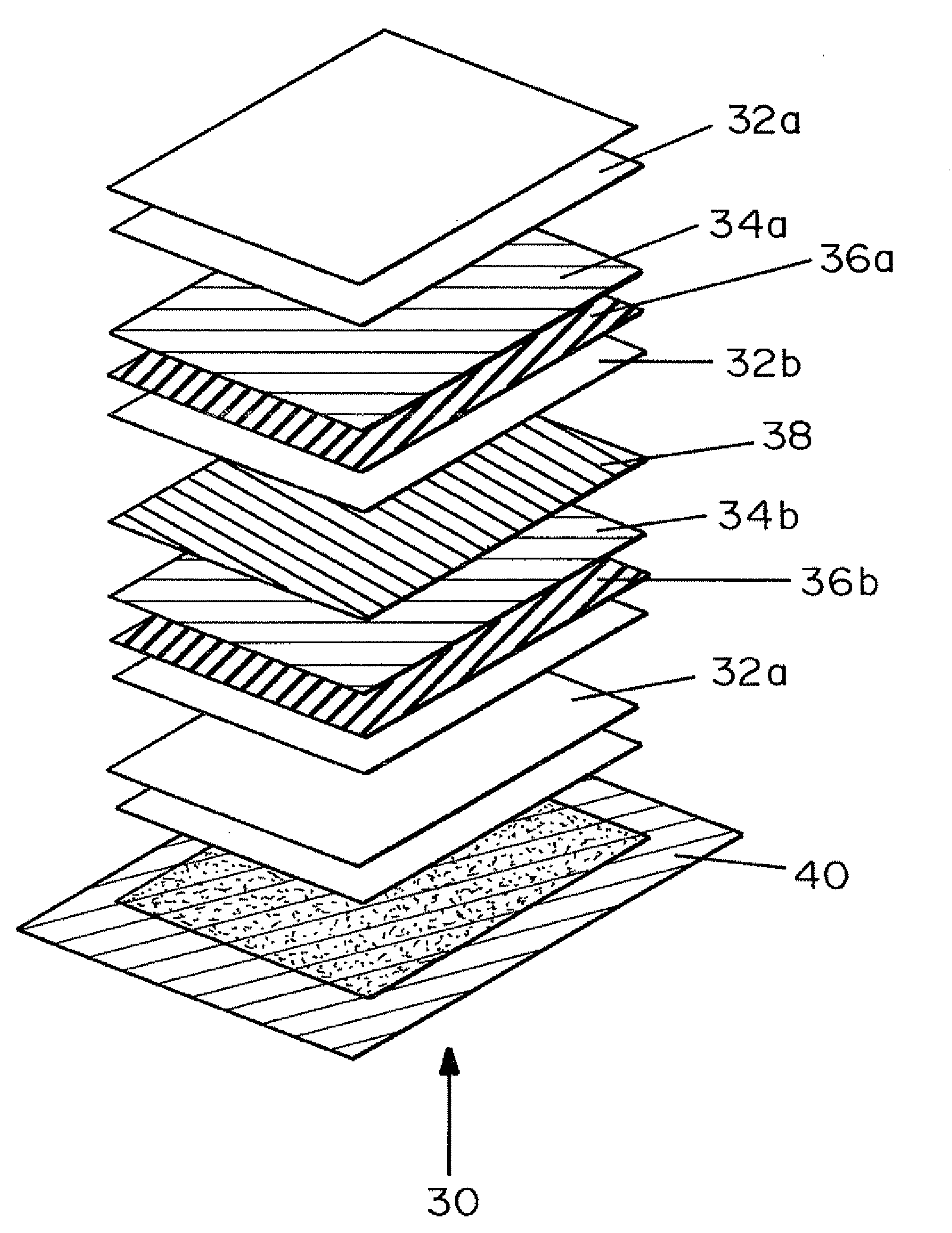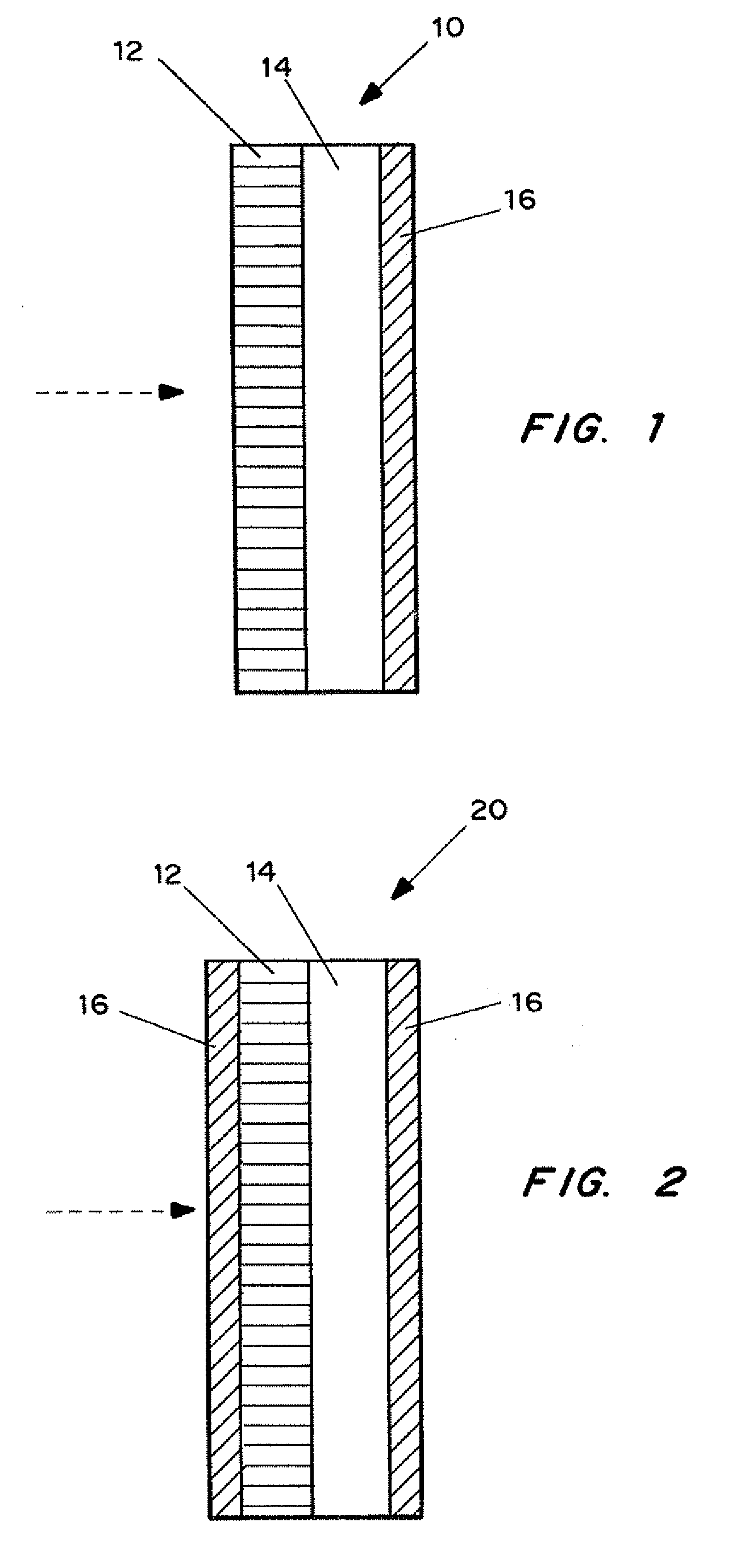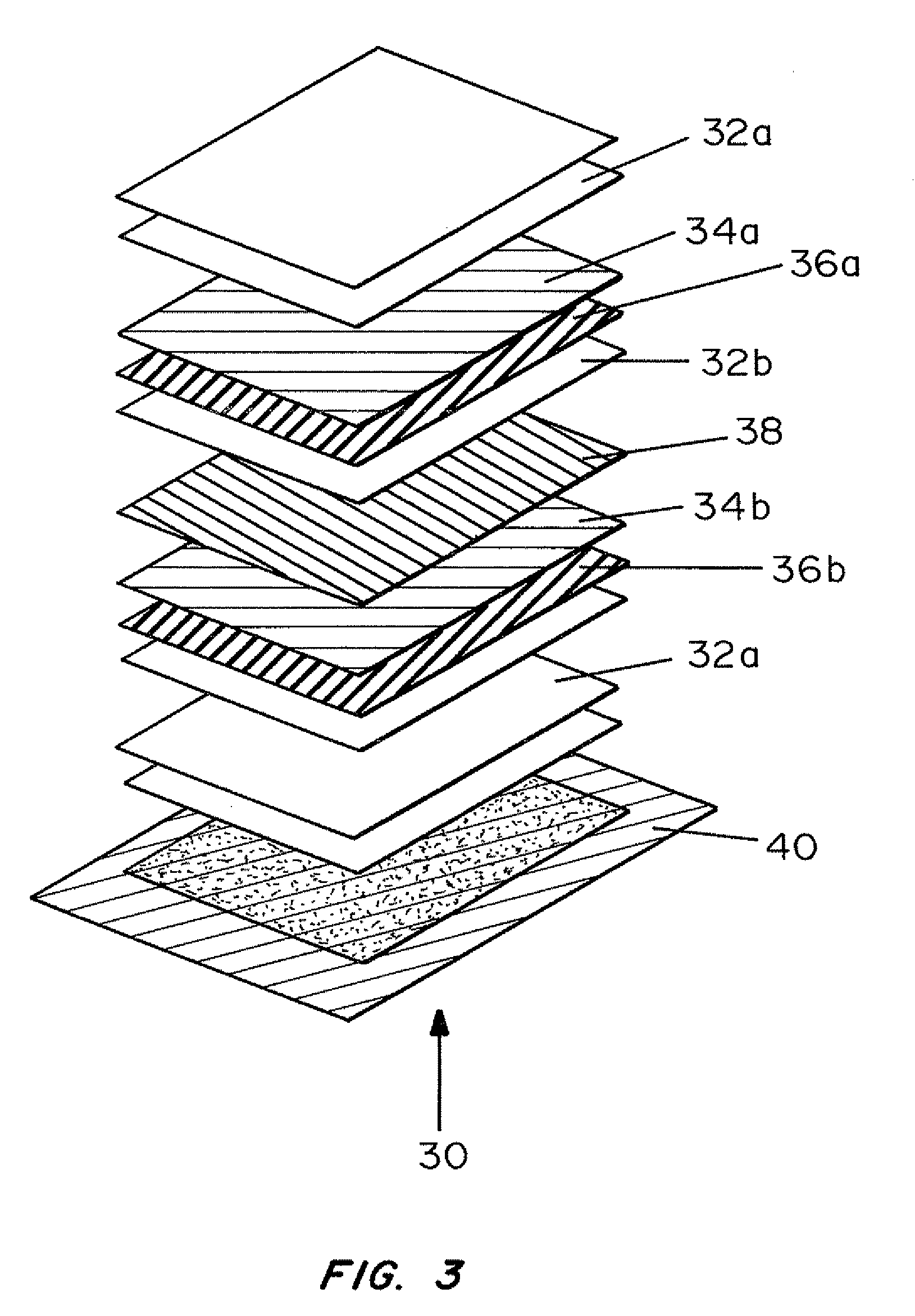Systems and methods for quantitative analyte transfer
a technology of quantitative analytes and systems, applied in the direction of liquid/fluent solid measurement, fluid pressure measurement, peptides, etc., can solve the problems of quantitative adsorption of low mwt, difficult to achieve a wide range of molecular weight proteins, and inability to efficiently provide conditions on the surface, so as to improve the adsorption reduce the blow through of low molecular weight analytes, and enhance the transfer of low molecular weigh
- Summary
- Abstract
- Description
- Claims
- Application Information
AI Technical Summary
Benefits of technology
Problems solved by technology
Method used
Image
Examples
example 1
Western Blot Transfer to a PVDF Membrane With and Without a 1 kDa MWCO Dialysis Membrane
[0104]Western blot transfer of 2 ng / gel plug of a biotinylated sample (protein labeled with biotin-NHS reagent and dialyzed to removed unreacted label) of Ovalbumin “cast in place” using cross linked polyacylamide. The dPC gel chip with the above protein cast in place was placed in equilibration buffer (7M Urea, 2M Thiourea, 2% (Wt. v) SDS) at 70° C. for 5 min. After rinsing in transfer buffer (10% (v / v) methanol 25 mM Tris base, 100 mM Glycine) the dPC chip was carefully dried to remove excess liquid, then placed onto a sheet of 1 kDA MWCO dialysis membrane (Spectrum Industries) termed the cathode side. On the second upper face (anode) a multilayer substrate consisting of PVDF blotting membrane (Immobilon P, Millipore Corp) attached to a 1 kDa dialysis membrane and 3 layers of blotting paper soaked in transfer buffer were applied with some linear polyacrylamide (0.5% in transfer buffer) placed o...
example 2
Western Blot Transfer to Two Layers of PVDF Membrane With and Without a Sheet of Dialysis Membrane In-Between the Two Layers Preventing “Blow Through”
[0107]Western blot transfer and detection were carried out as described above except two layers of PVDF transfer membrane (FIG. 5A) were employed. A second western transfer was set up with a layer of 1 kDa MWCO dialysis (Spectrum Industries) membrane between the two layers (FIG. 5B).
[0108]As shown in FIG. 5B, this arrangement resulted in the quantitative transfer to the single sheet of PVDF membrane (adjacent to the separation medium backed with the disalysis membrane) with no “blow through” to the second PVDF membrane. In contrast, in FIG. 5A the two membrane layer showed a weak protein signal, indicating that the transfer was non-quantitative.
PUM
| Property | Measurement | Unit |
|---|---|---|
| molecular weight | aaaaa | aaaaa |
| molecular weight | aaaaa | aaaaa |
| molecular weight | aaaaa | aaaaa |
Abstract
Description
Claims
Application Information
 Login to View More
Login to View More - R&D
- Intellectual Property
- Life Sciences
- Materials
- Tech Scout
- Unparalleled Data Quality
- Higher Quality Content
- 60% Fewer Hallucinations
Browse by: Latest US Patents, China's latest patents, Technical Efficacy Thesaurus, Application Domain, Technology Topic, Popular Technical Reports.
© 2025 PatSnap. All rights reserved.Legal|Privacy policy|Modern Slavery Act Transparency Statement|Sitemap|About US| Contact US: help@patsnap.com



